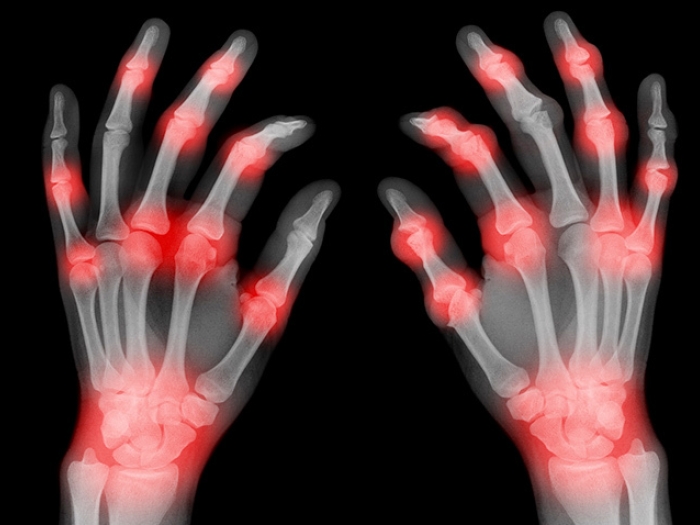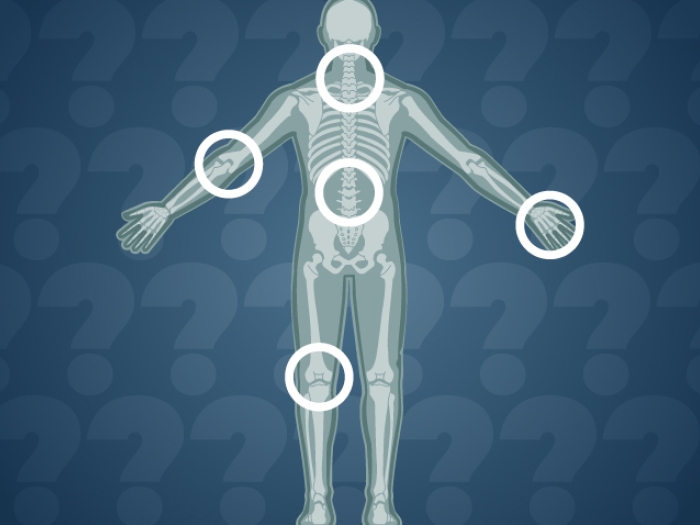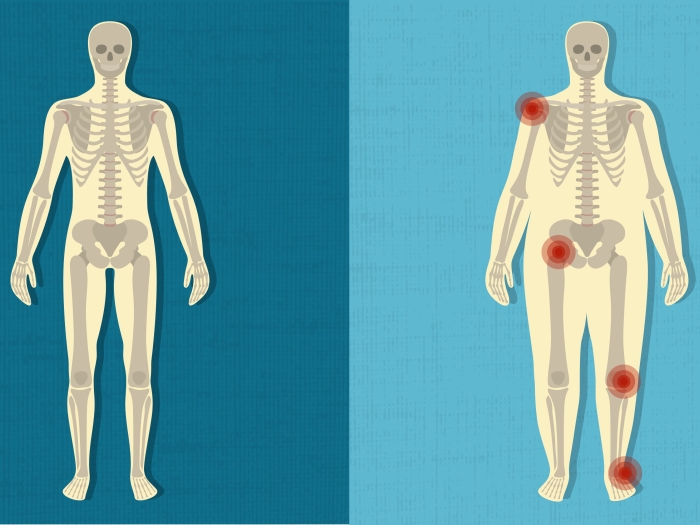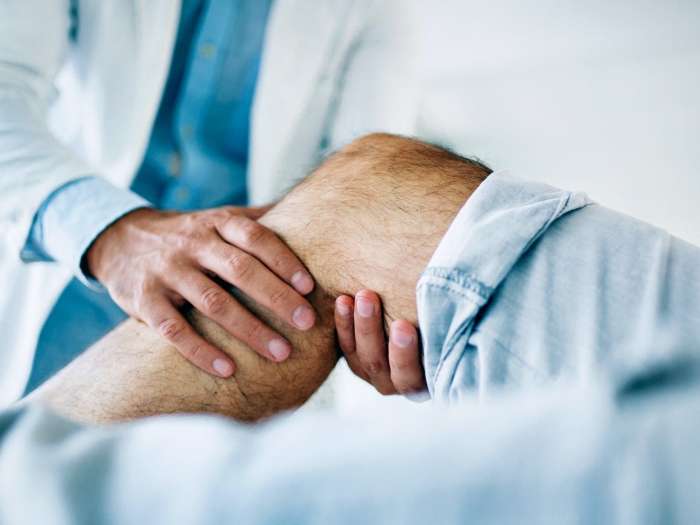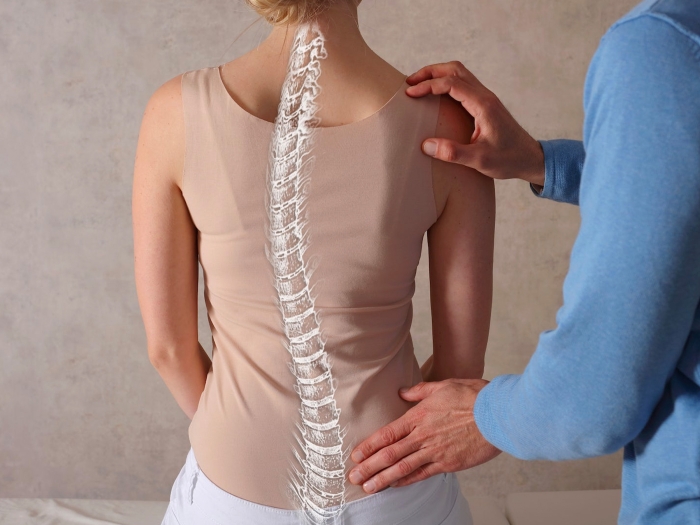Crippling and unexplained back pain led one patient to U-M, where a personalized team approach helped her find relief.
1:00 PM
Author |

In 2003, Beverly Burchi was doing aerobic exercises in her local swimming pool when something in her back just didn't feel right.
MORE FROM MICHIGAN: Sign up for our weekly newsletter
"My back became extremely, extremely painful," Beverly says. "I knew something was going on, so I started looking for a spine clinic near me."
She and her husband, Bob, were staying at their winter home in Florida and found a clinic nearby. After several months of visits, though, physicians weren't sure where Beverly's pain was coming from or how to relieve it.
"They tried everything," Beverly says. "CAT scans, MRIs, narcotics, Botox, just all kinds of things. But nothing seemed to help find out where I was injured."
The pain became so great over those months that she could not sit down, and instead could only lie down flat or walk.
"Our lifestyle was completely shut off," Beverly says. "It was unbelievable. We couldn't do anything. We couldn't go to a restaurant. We couldn't go shopping. We were confined to our home."
Help close to home
Determined to ease his wife's discomfort, Bob began researching physicians and hospitals in their home state and found the Department of Neurosurgery at the University of Michigan.
Beverly was referred to Ronald Wasserman, M.D., assistant professor of anesthesiology, service chief for pain medicine and director of the U-M Back and Pain Center, part of the U-M Comprehensive Musculoskeletal Center.
Her diligence proved helpful: She had kept a journal the entire time she was in Florida. It detailed every doctor's visit, each medication she was prescribed and all tests that were administered.
"I brought my journal to that first appointment, and the doctor that examined me first read through every page and went through every date with me, discussing what test I had and what medication I had taken," Beverly says. "He spent 45 minutes with us just going through the journal, page by page. He gave me a physical, and then he went out and got Dr. Wasserman."
Wasserman thoroughly examined Beverly to find out the root of her pain and discomfort and to recommend proper treatment.
"There was absolute care and thoughtfulness in that visit," she says. "I was in such agony, and they wanted to help me. We were just astonished. We had never been to a doctor's office that has the team approach U-M has."
Treatment and results
Wasserman determined that Beverly was experiencing pain from her sacroiliac joint, where the spine and pelvis meet. Pain in that joint can lead to lower-back, buttock and thigh pain.
To help provide relief, Wasserman prescribed injections, including one specifically for her sacroiliac, and a steroid injection performed under X-ray guidance.
"When I came in two weeks after the first injection, I was sitting up and he was ecstatic for me," Beverly says. "I hugged him because it was just a miracle. He has just changed our lives."
She adds, "He is a doctor that really cares about his patients. He's so professional, compassionate and patient. He listens to me, and I really believe he's listening to see what kind of treatment I need."
Beverly says Wasserman didn't prescribe opioids, like she had been taking briefly in Florida.
"He's never even mentioned them," she says. "I hated the way they made me feel in Florida, and I immediately stopped taking them. Dr. Wasserman didn't want me thinking pills were making it better when they really weren't."
"We trust each other, and I know I've found the doctor for me."
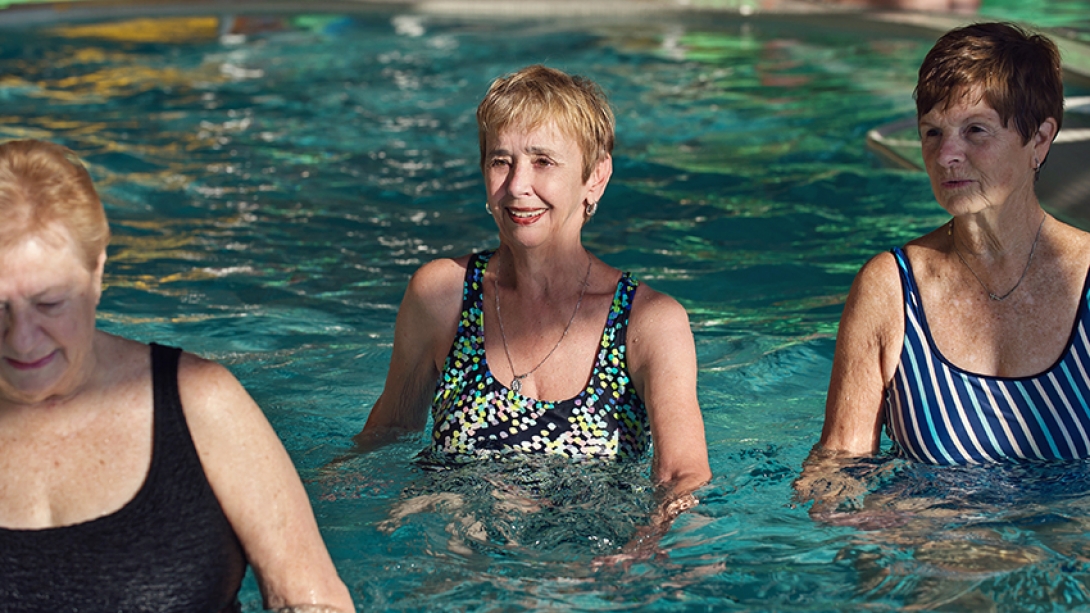
Back on track
Beverly has since kept regular appointments with Wasserman for follow-up injections, and now walks across her local swimming pool four to five times a week.
SEE ALSO: Should You Lift that Item After Surgery?
"I use a floating noodle and hang my body to help strengthen and straighten my body and spine," she adds. "I'm trying to do what I should to help my body get better."
She is grateful not only for the care she received from Wasserman and his team, but also for gaining a newfound sense of hope thanks to her reclaimed mobility.
"Dr. Wasserman has truly given me my life back," she says, "and I will be forever grateful."

Explore a variety of healthcare news & stories by visiting the Health Lab home page for more articles.

Department of Communication at Michigan Medicine
Want top health & research news weekly? Sign up for Health Lab’s newsletters today!
